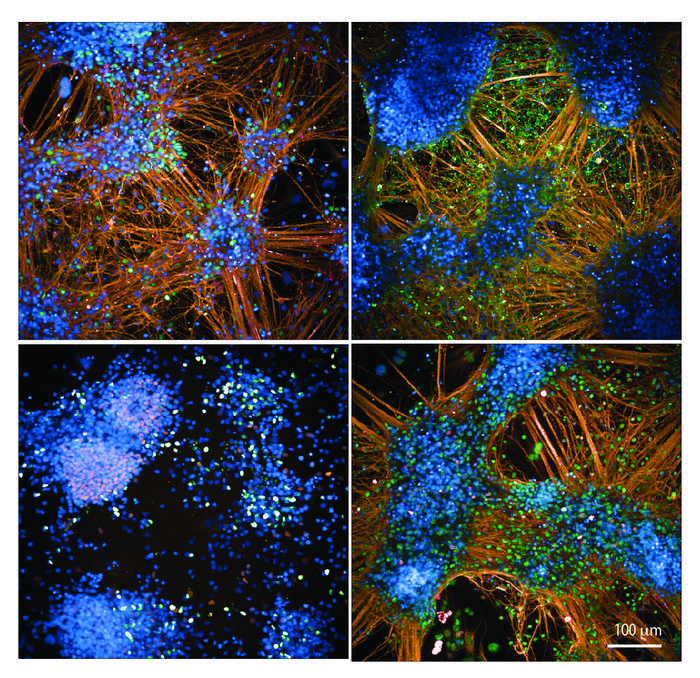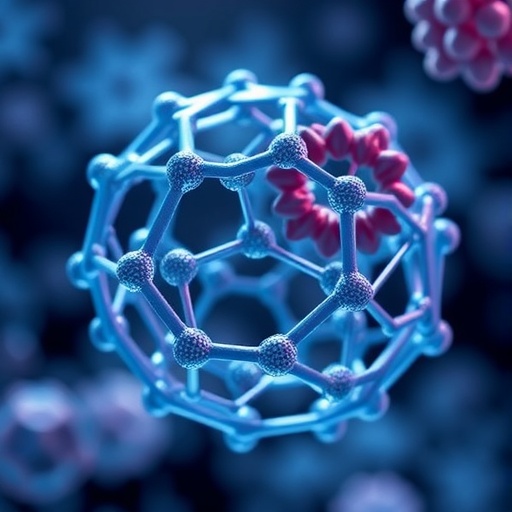In humans, the exact same mutation in a specific gene can produce widely different outcomes. It’s a bit like adding the same amount of salt to different recipes—the effect on the finished dish can be quite different, depending on the mix of other ingredients. Now, researchers at The Jackson Laboratory (JAX) have developed a powerful platform to study the reasons behind these varying mutation outcomes. The work, published today in Science Advances, not only provides new opportunities for uncovering targets for therapeutic interventions but also represents a significant step forward in addressing the critical need for studying human disease in the context of genetic diversity.

Credit: The Jackson Laboratory
In humans, the exact same mutation in a specific gene can produce widely different outcomes. It’s a bit like adding the same amount of salt to different recipes—the effect on the finished dish can be quite different, depending on the mix of other ingredients. Now, researchers at The Jackson Laboratory (JAX) have developed a powerful platform to study the reasons behind these varying mutation outcomes. The work, published today in Science Advances, not only provides new opportunities for uncovering targets for therapeutic interventions but also represents a significant step forward in addressing the critical need for studying human disease in the context of genetic diversity.
The platform, developed by JAX Professor Martin Pera, Ph.D. and Associate Research Scientist Daniel Cortes, Ph.D., and their colleagues, uses stem cells from eight different mouse strains to mimic the genetic diversity seen in humans. With the platform, they were able to investigate the effects of background genetics on the DYRK1A gene, long associated with autism, microcephaly, and intellectual disability in humans. The result: Chemically inhibiting the function of DYRK1A or knocking the gene out within the stem cells from the eight mouse strains led to markedly different effects in the growth and repair of neurons, providing molecular insights into what may confer resistance or vulnerability to the development of autism.
“If we studied one strain, we wouldn’t have seen this incredible degree of variation,” said Pera. “But by studying eight, we showed that stem cell models in a dish can accurately predict an individual’s sensitivity or resilience to disease-causing mutations, in this case an autism syndrome disorder. Careful comparison of sensitive and resilient mouse strains at the cellular level also enabled us to identify potential targets for therapeutic intervention.”
To create the platform, Pera, Cortes and colleagues, including JAX Associate Professors Laura Reinholdt, Ph.D., and Kristen O’Connell, Ph.D., had to overcome a key obstacle. They found that only the stem cells from mouse strain 129S1/SvlmJ (129) could be coaxed into differentiating into neurons using commonly used protocols. The JAX team – and this is the innovation — developed protocols that worked across all eight strains and, with modification, produced multiple neuron types with high efficiency.
In previous work, Pera also investigated DYRK1A in human-induced pluripotent stem cells (iPSC), derived from adult skin or blood cells that can be induced to become stem cells. These stem cells can then re-differentiate into any cells in the body given specific genetic instructions, a state known as pluripotency. The protocols developed for the mouse cell lines were effective in generating the same neuron types from multiple pluripotent human stem cell lines, validating the results obtained in the mouse cell platform.
Further investigation revealed that one mouse strain, C57BL/6J (B6), most closely modeled the human iPSC response to low DYRK1A levels or inhibition during neural cell specification and expansion. The strains least affected were WSB/EiJ (WSB) and NZOHiLtJ (NZO). B6 and WSB also showed highly divergent responses to axonal injury. Comprehensive comparisons between strains highlighted the molecular mechanisms that define these differences, previously implicated in neurodevelopmental disorders.
Finally, Pera’s team worked with Zhong-Wei Zhang, Ph.D., at JAX to study live mice to see if the B6 susceptibility observed in the mouse stem cells was reflected in a living system. Or, rather, not living, as they found that even the loss of one copy of Dyrk1a resulted in no live offspring with a B6 background, while it did not affect survival in other backgrounds, including 129. Crossing B6 with 129 mice, however, resulted in live offspring with clinical features associated with DYRK1A mutations in humans, suggesting an effective mouse model for diseases such as Alzheimer’s, Down syndrome, microcephaly, autism, and intellectual disability.
“This work illustrates the power of incorporating genetic diversity into disease models,” said Pera. “The use of stem cells in vitro allows us to directly compare mouse and humans, and to bridge results in a petri dish to those in a whole organism. The approach will have wide application in disease genetics and will enhance and accelerate precision disease modeling in the mouse.”
Journal
Science Advances
DOI
10.1126/sciadv.adj9305
Method of Research
Experimental study
Subject of Research
Cells
Article Title
An in vitro neurogenetics platform for precision disease modeling in the mouse
Article Publication Date
3-Apr-2024




